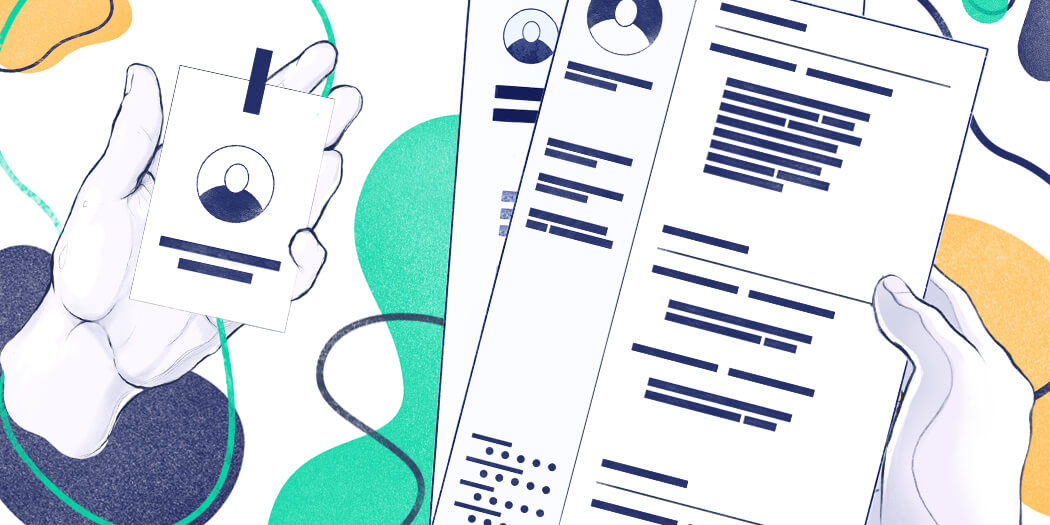
CV for Internship—Sample & 25+ Writing Tips
A CV for internships that’ll get you into the interview. Write your internship CV fast, with expert hints, 25+ writing tips & good and bad examples.

Tom Gerencer
Career Expert
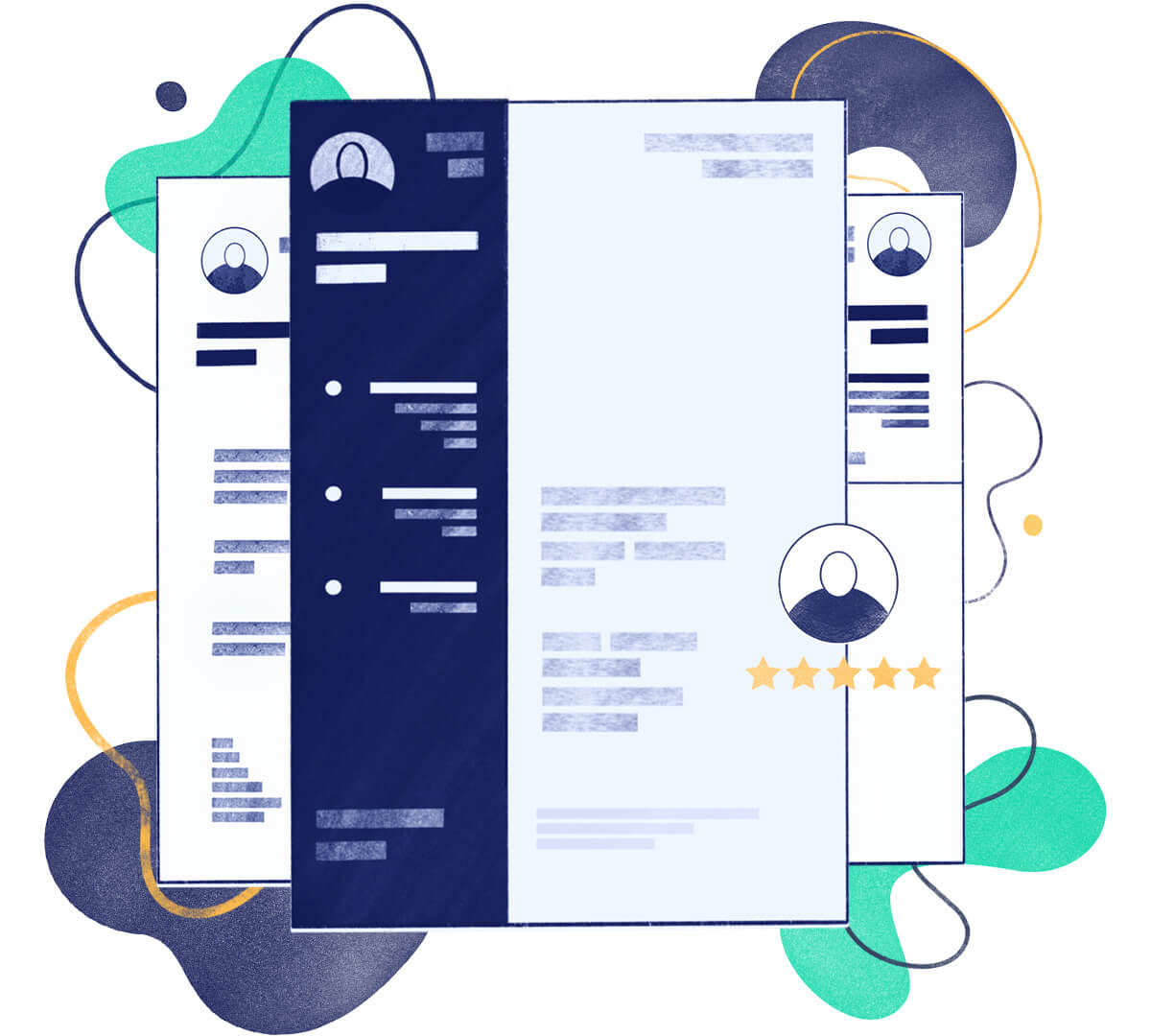
A CV job description is a CV section where you list your professional experience, usually in reverse-chronological order. It means you start with your most recent position and proceed backwards. Each entry should contain 3-6 bullet points. It is recommended to include 10-15 years of work history on your CV.
Well-written job descriptions in your CV work experience section is what recruiters crave—
Why?
This is critical: employers ask for CVs to review your work history.
Maybe you’re the most qualified candidate for this position. But—
You still might fail to land the job if your CV work experience section isn’t top-notch.
Here’s how to make sure they like what they see.
This guide will show you:
What does a perfect CV job description look like? See below—
Save hours of work and get a CV like this. Pick a template, fill it in. Quick and easy. Choose from 21 CV templates and download your CV now.
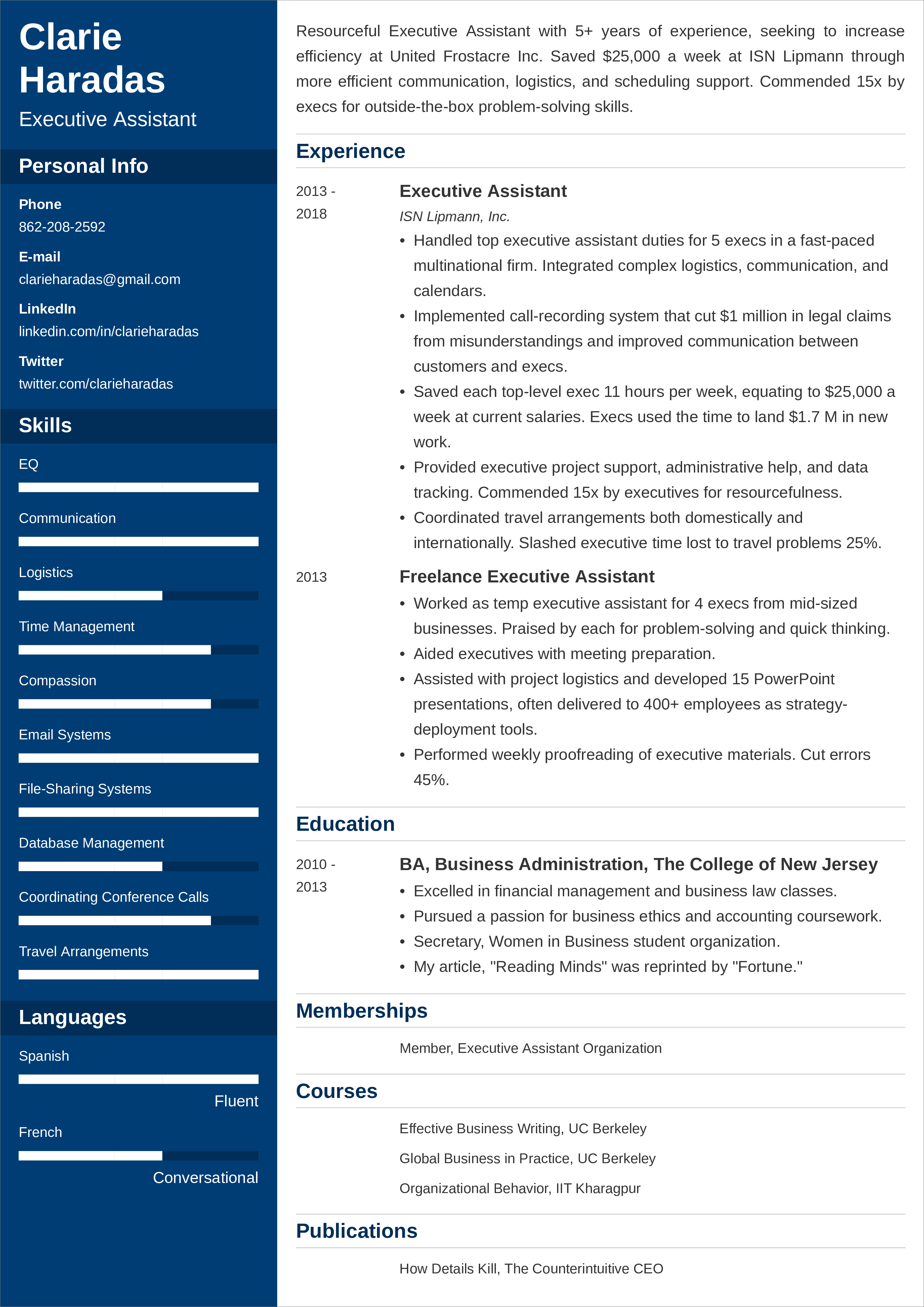
What users say about ResumeLab:
I had an interview yesterday and the first thing they said on the phone was: “Wow! I love your CV.”
Patrick
I love the variety of templates. Good job guys, keep up the good work!
Dylan
My previous CV was really weak and I used to spend hours adjusting it in Word. Now, I can introduce any changes within minutes. Absolutely wonderful!
George
Need help with a specific kind of CV? Explore our guides:
To begin with, meet Amelia—
She’s applying for the position of Head of Digital Marketing at a major financial institution, XYZ Company. Below, you’ll see her sample CV work experience section.
Digital Marketing Manager
Acme Corp, NYC, NY
2014–2018
Most relevant accomplishment: Grew the company blog from 0 to 700,000 organic users per year in 14 months.
Product Manager
Pfitzer, Newark, NJ
2011–2014
Most relevant accomplishment: Supervised the design of 2 flagship product websites increasing online sales by 231% in 6 months.
Freelance Online Marketing Consultant
Self-employed, NYC, NY
2008–2011
Wow, right? Amelia can sit back, relax, and wait for her interview invitation.
Don’t have work experience at all and feel at a loss as to what you should write? Fret not. See: Complete Guide to Writing the First CV with No Work Experience
Think it’s hard to write an equally professional work experience section for on your CV?
Nope. It’s easy. All boils down to three key strategies. Here they are:
This study by The Ladders found that recruiters spend, on average, just 7 seconds on each CV they get.
Here’s the twist: it applies mostly to CVs that have poor formatting and are difficult to follow.
Legible formatting of your CV work history is key to earning more eye-time.
Here’s what you need to do to present the work experience on a CV the way recruiters expect:
1. Name the section “Work Experience,” “Work History,” or “Professional Experience.” Write the section heading in bold and make it slightly larger than the rest of the contents.
2. Use reverse-chronological order. Start with your current or most recent job, follow it with the one before it, and so on.
3. In each entry heading, list, in the following order: your job title, the name of the company, and dates worked.
4. Underneath each job add up to 6 bullet points describing your duties and achievements.
5. At the bottom of each entry add a subsection named “Most relevant accomplishment” or “Key achievement.” Present your proudest professional win.
6. Focus on your most recent work experience. Make your job descriptions briefer and briefer as you go back in time.
Recruiters don’t care how successful you’ve been so far, in general.
They want to know if you’re familiar with the duties and responsibilities that come with the advertised position.
If there’s just one takeaway I want you to get out of reading this guide, it’s this:
Personalise every work experience entry on your CV to the position you’re trying to land.
Remember Amelia, the candidate from our sample CV job description?
She’s eyeing the Head of Digital Marketing position. Her most recent job has been a managerial role in digital marketing, but—
Before that, she worked as a Product Manager. So, what did she do? In her CV work history, she described responsibilities that were relevant to digital marketing.
Have a look:
Product Manager
Pfitzer, Newark, NJ
2011–2014
Most relevant accomplishment: Supervised the design of 2 flagship product websitesincreasing online sales by 231% in 6 months.
Product Manager
Pfitzer, Newark, NJ
2011–2014
Don’t get me wrong. The bad example isn’t “bad” as such. It’s just not right for this particular post.
Need more in-depth guidance on personalising or tailoring your CV to the job description? Go here: How to Tailor Your CV to the Job Description to Get More Offers
Making a major career change but having actually no relevant experience? See: Career Change CV: How to Make Sure It Land You the Job
But—
Being relevant in your CV job description isn’t just about what you write. It’s also about how far back your CV work experience should go and what you choose to omit.
Expert Hint: If you’re not a seasoned pro yet, make sure to include internships in your CV work experience. Research has shown that internship experience increases the interview rate by 14%.
And is there any sort of work experience you should leave out no matter what?
Yes—and, again, there’s science behind it.
Unless you’re fresh out of university, don’t put low-level interim jobs on your CV. They can hurt your callback rate by as much as 15%.
And, yes, according to the same data, it’s better to leave employment gaps on a CV (no variation in callback rates by the duration of unemployment!) than list interim blue-collar gigs.
Alright then.
You know how to lay out your experience for greatest impact and you’ve learned how to personalise every job description.
Now, for the final part: time to learn how to showcase your strengths, not just everyday responsibilities—
The ResumeLab builder is more than looks. Get specific content to boost your chances of getting the job. Add job descriptions, bullet points, and skills. Easy. Improve your CV in our CV builder now.
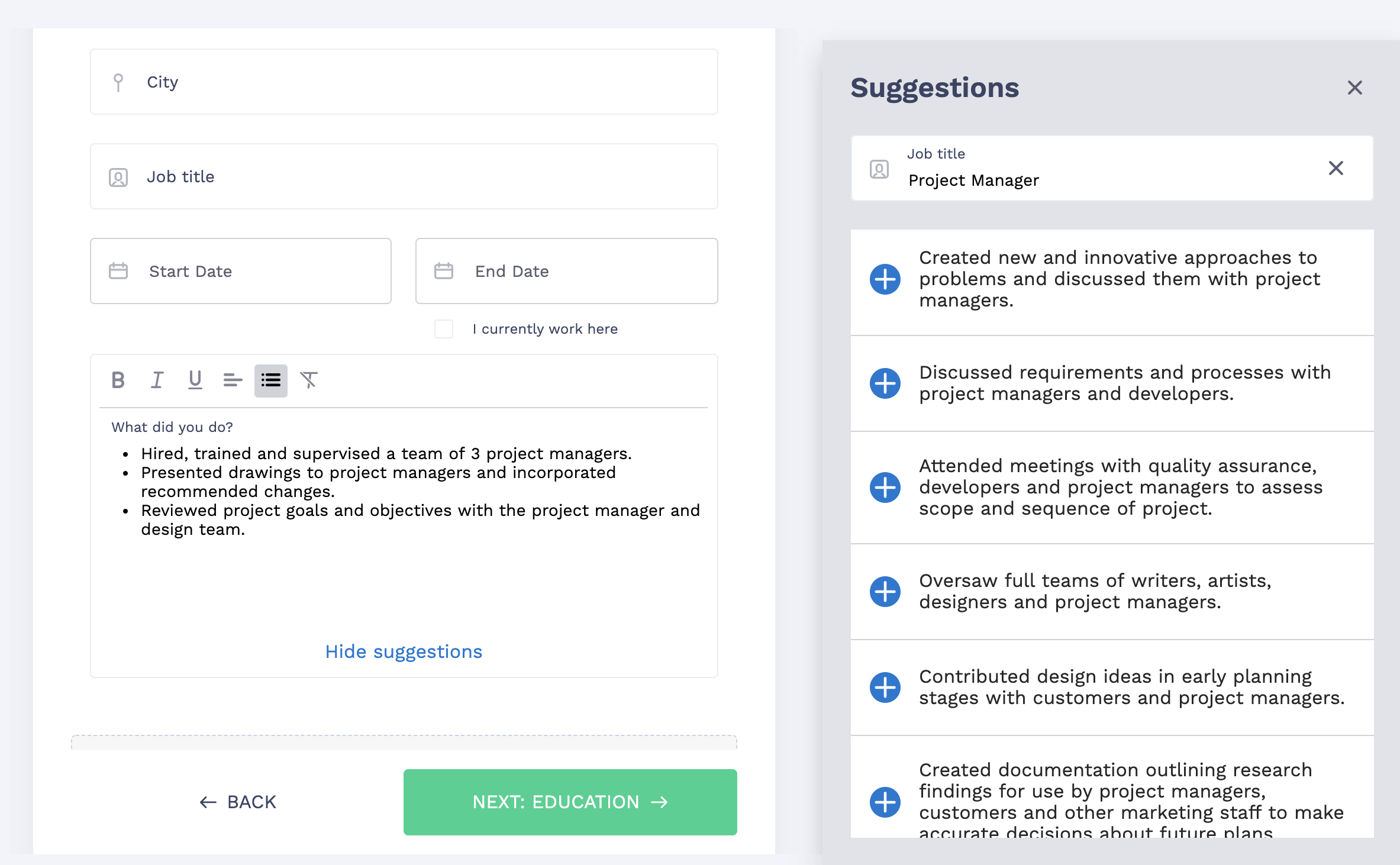
Nail it all with a splash of colour, choose a clean font, highlight your skills in just a few clicks. You’re the perfect candidate and we’ll prove it. Use the ResumeLab builder now.
Some food for thought:
People don’t drink diet Coke because of low calorie. They do it to look better than that coworker they hate at the end-of-year party.
The same goes for employers: they won’t hire, say, an “experienced customer service rep,” a “project manager skilled in Agile and Scrum,” or a “developer with extensive knowledge of PHP and R.”
Instead—
They’ll go with someone who’ll raise their revenue, cut costs, or optimise processes. In your CV work experience, show them you’re that person.
Provide proof of your achievements, don’t just list your responsibilities and “features.” Focus on benefits for your future employer.
There are three steps:
No more “responsible for the development of … .” Go with “developed.”
Use action verbs that highlight your initiative. See the examples below.
Like this:
CV Job Description Sample: PAR Formula
Problem? Phone surveys were bad for customer retention.
Action? So I designed new survey scenarios.
Result? Customer retention raised by 32%.
Forget about “significantly boosting sales.” Say how much exactly. Demonstrating results with numbers in the work experience on your CV enhances your hireability by 40%.
I know, I know.
Not everyone works with hard numbers and sometimes it’s difficult to measure your results.
But still—there are other ways to back up your performance with quantified data. Here are some useful questions to ask yourself:
That’s right: answers to these should appear in the job descriptions on your CV.
Expert Hint: “Does a CV need a cover letter?” It certainly does. Just like 83% of hiring managers who admit that a candidate’s cover letter is an important factor when making a hiring decision.
Double your impact with a matching CV and cover letter combo. Use our cover letter builder and make your application documents pop out.
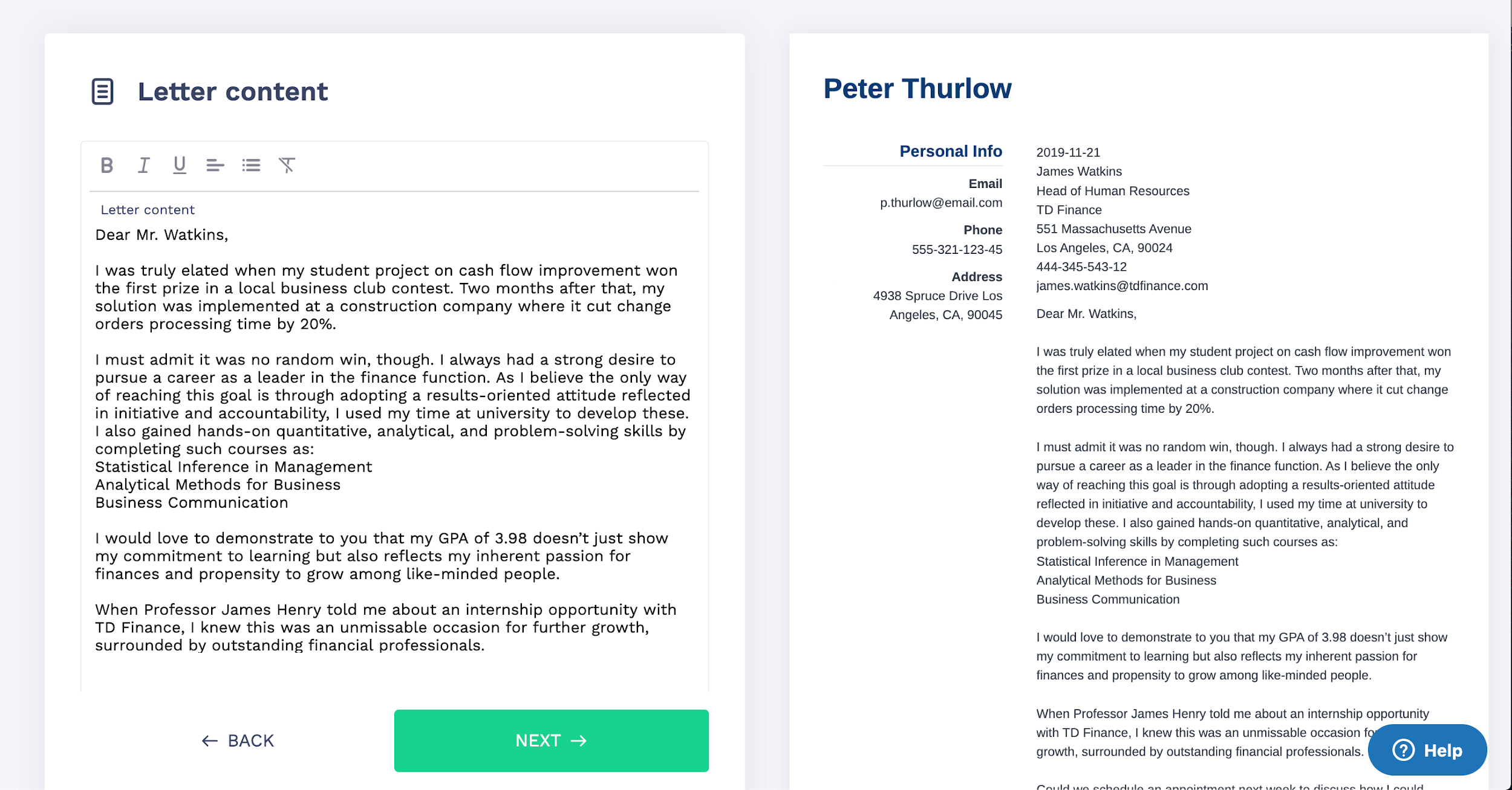
Want to try a different look? There’s 18 more. A single click will give your document a total makeover. Pick a cover letter template here.
Here’s how to write your CV work experience section right:
All check? Keep your phone charged and ready. You’re in for some job interviews!
Questions? Concerns? I’m here to listen and answer. Let me know your thoughts in the comments below and I’ll get back to you right away.
At ResumeLab, excellence lies at the heart of our values, underpinning our promise to provide outstanding career resources. Our team of career experts meticulously assesses each article in line with our editorial guidelines, guaranteeing our content's high quality and dependability. We consistently engage in original research, illuminating the nuances of the job market and earning acclaim from various influential news outlets. Our commitment to delivering professional career advice draws millions of readers to our blog annually.

A CV for internships that’ll get you into the interview. Write your internship CV fast, with expert hints, 25+ writing tips & good and bad examples.

Tom Gerencer
Career Expert
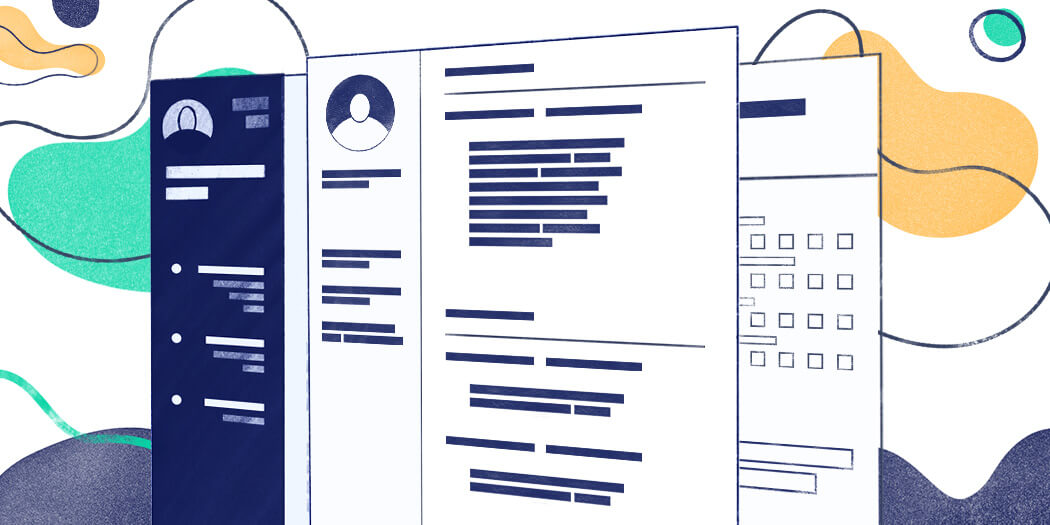
You’ve got no experience. None. Zip. Nada. Zilch. NO “other jobs.” No freelance work or past work history. Get hired anyway with this top-notch CV with no experience sample.

Tom Gerencer
Career Expert

How to put volunteer experience on CVs. When to add volunteer CV work to work experience. How to list volunteer work on a CV to make employers notice.

Tom Gerencer
Career Expert